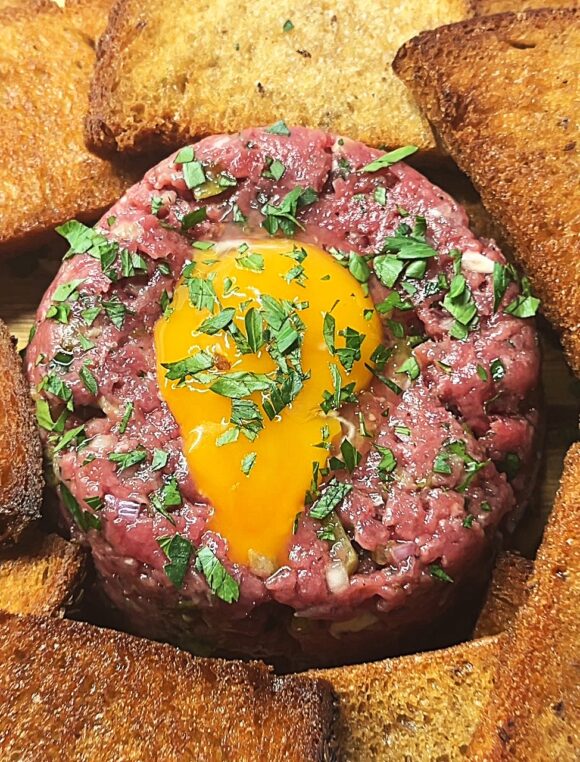Table of Contents
- Introduction: The Secret Life of Iconic Dishes
- Italy: The Unexpected Journey of Pasta Bolognese
- France: Beef Tartare’s Raw Reputation
- Mexico: The Caesar Salad That Wasn’t Born in Rome
- Conclusion: Every Bite Has a Backstory
Introduction: The Secret Life of Iconic Dishes
Have you ever sat down to enjoy a bowl of pasta Bolognese, a rich plate of beef tartare, or a crisp Caesar salad—and wondered where these recipes really come from?
Beneath the layers of parmesan, raw egg yolks, and romaine lettuce lies a world of culinary storytelling that often defies our assumptions. In this post, we’re digging into the fascinating origins of three iconic international dishes, revealing unexpected truths that connect food with culture, travel, and history.
Let’s uncover the real stories behind these familiar plates.
Italy: The Unexpected Journey of Pasta Bolognese
Origins Beyond Bologna
Pasta Bolognese is one of the world’s most beloved Italian comfort foods. But ask a local in Bologna about “spaghetti Bolognese,” and you might get a puzzled look.
- The traditional dish from Bologna is called “Ragù alla Bolognese.”
- It’s typically served with tagliatelle, not spaghetti.
- The original recipe is meat-forward and slowly simmered with milk, wine, and soffritto (celery, onion, carrot).
SEO keywords: authentic Italian pasta, Ragù alla Bolognese history, traditional Bolognese sauce
The Global Misunderstanding
The dish we call “spaghetti Bolognese” is a globalized invention, often bearing little resemblance to its Italian ancestor.
- British and American cookbooks helped popularize the term in the mid-20th century.
- Tomato-heavy, garlic-laced versions became the norm abroad.
- Italy has embraced the myth as part of its international food fame—though not without protest.
France: Beef Tartare’s Raw Reputation
From Warriors to White Tablecloths
Beef tartare may seem like a symbol of refined French cuisine, but its story begins in the rugged plains of Central Asia.
- The Mongol warriors of the 13th century supposedly ate raw horse meat—tenderized under their saddles.
- The name “tartare” links back to these Tatar tribes, though the culinary lineage is debated.
The Evolution of Elegance
The dish made its fine-dining debut in Paris in the early 20th century, often served with:
- Finely chopped raw beef
- Capers, shallots, and mustard
- A raw egg yolk on top
SEO keywords: history of beef tartare, French raw beef dish, classic tartare recipe
Mexico: The Caesar Salad That Wasn’t Born in Rome
Tijuana’s Fine-Dining Surprise
You might assume the Caesar salad has Italian origins, but its birthplace is actually Tijuana, Mexico.
- Created in the 1920s by Italian-American restaurateur Caesar Cardini
- Legend says it was invented on the spot during a busy holiday weekend
- Ingredients were tossed together tableside for flair: romaine, croutons, parmesan, lemon juice, raw egg, and Worcestershire sauce
How a Simple Salad Took Over the World
- It became wildly popular with Hollywood celebrities crossing the border during Prohibition.
- Variations (with chicken, anchovies, and kale) have since exploded across menus worldwide.
- Its hybrid heritage—Mexican setting, Italian name, American fame—makes it a true international fusion.
Top SEO terms: origin of Caesar salad, Tijuana Caesar salad, who invented Caesar salad
Conclusion: Every Bite Has a Backstory
Recap & Takeaway
From the streets of Bologna to the boulevards of Paris and the borderlands of Tijuana, each of these iconic recipes tells a richer story than the plate suggests:
- Pasta Bolognese: A misunderstood classic born from tradition, not tomatoes.
- Beef Tartare: A raw delicacy with roots in warrior culture.
- Caesar Salad: A Mexican innovation with global acclaim.
Call to Action
Next time you cook or order one of these dishes, dig a little deeper. Share the real story with friends. Maybe even try the authentic version at home.
👨🍳 Explore beyond the recipe—rediscover the culture.
A Final Reflection
Our most iconic dishes often carry stories more flavorful than the food itself. What other recipes might surprise you with their origin tale? In every bite, there’s history—if you’re willing to taste it.

Leave a Reply